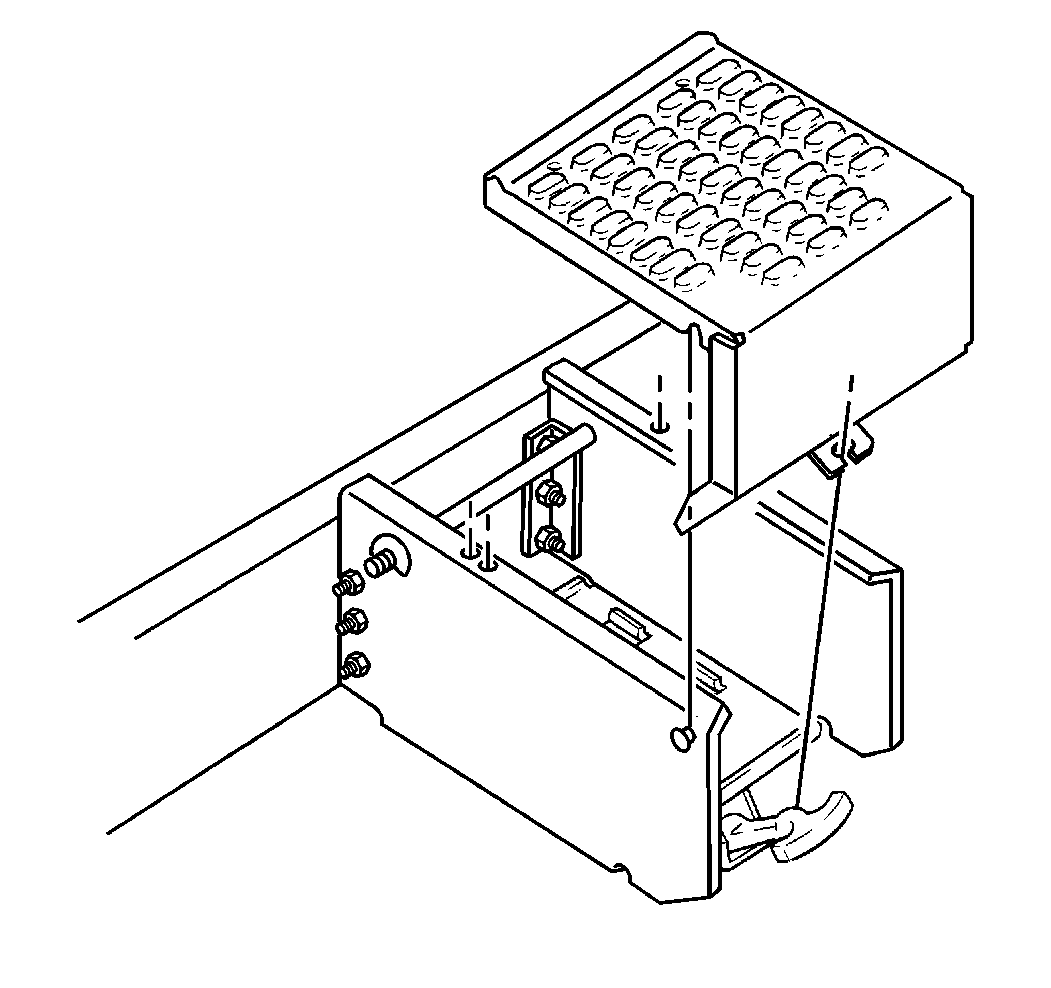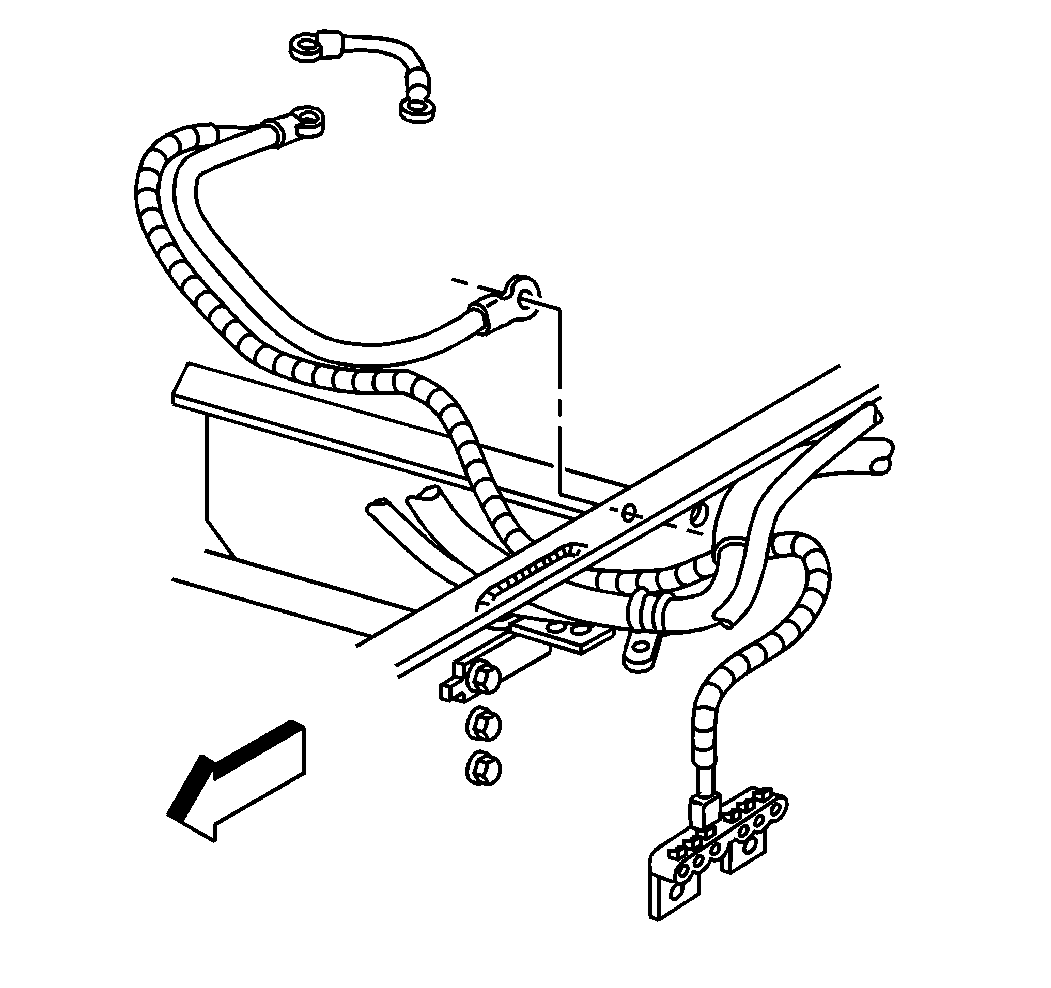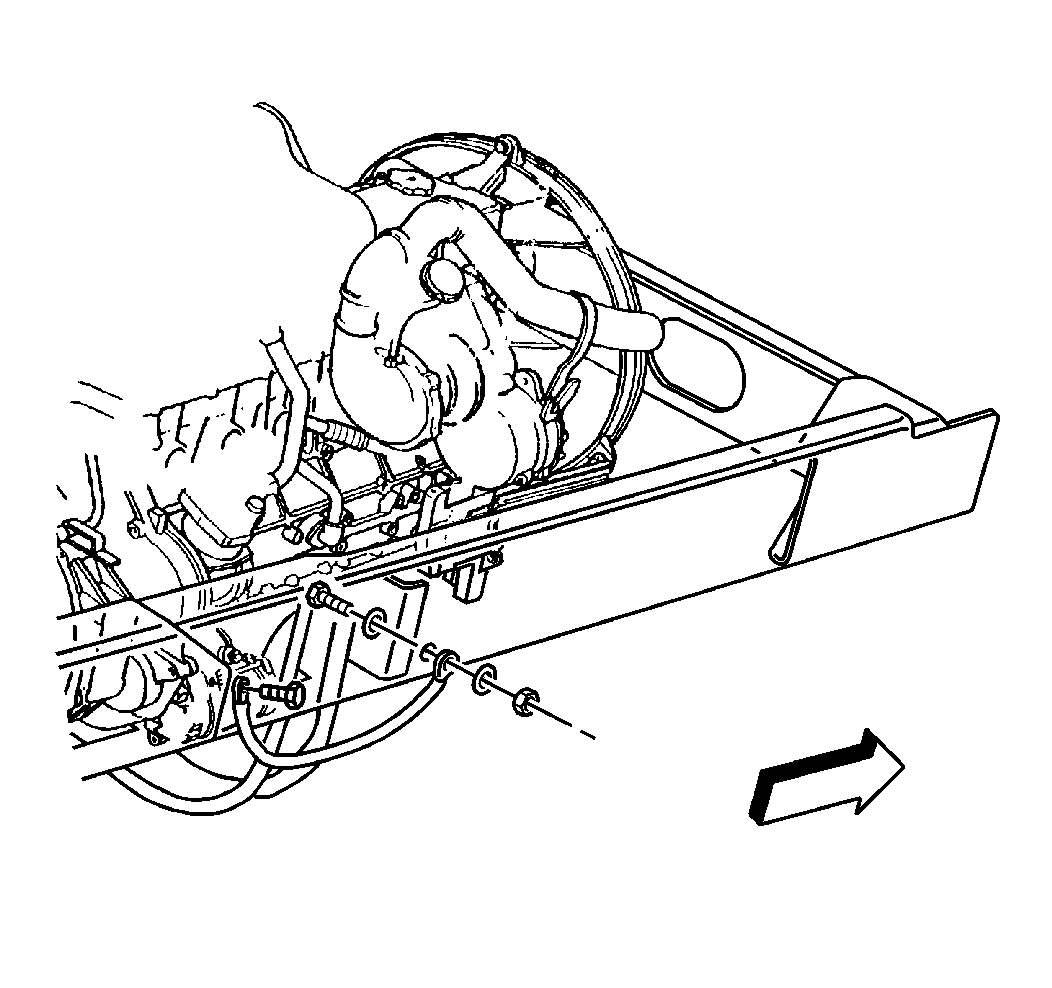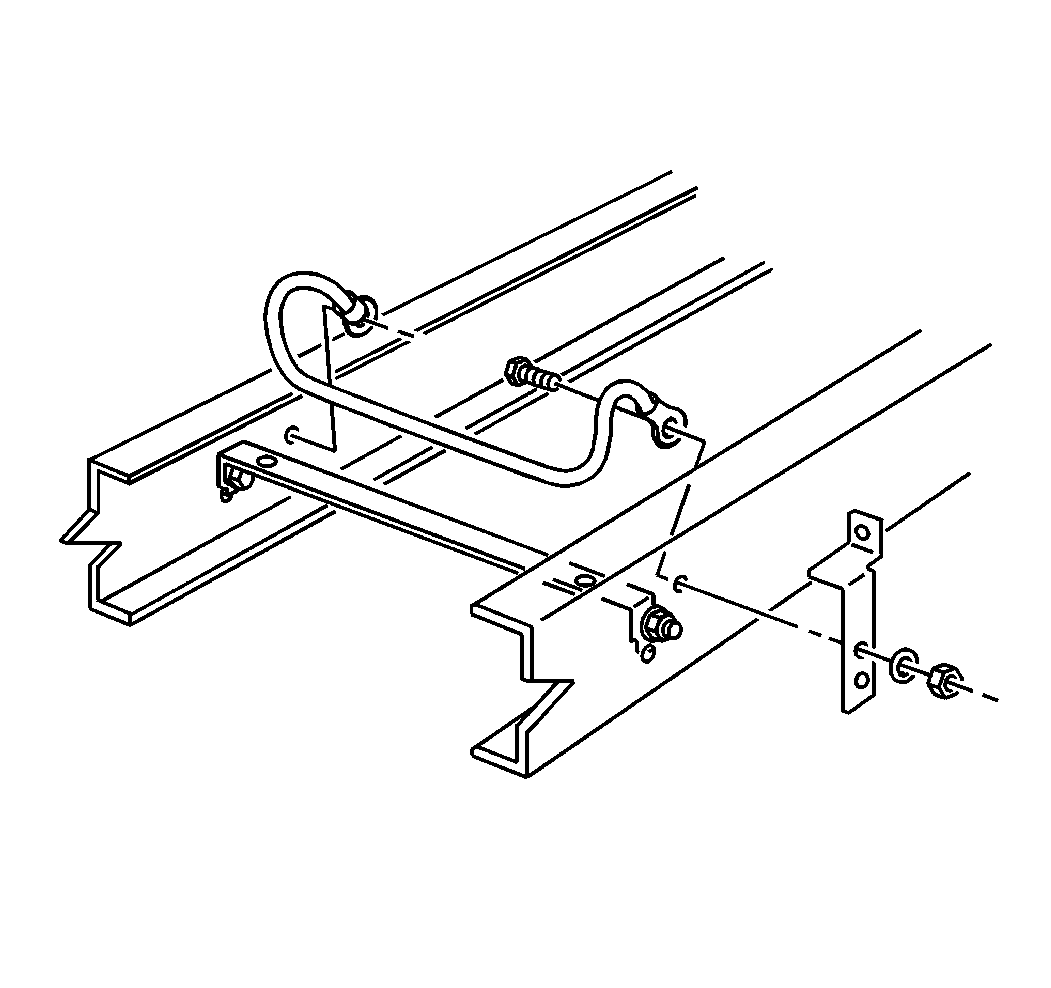When replacing battery cables, use a replacement cable having the following specifications the same as the original cable:
| • | Type of cable |
| • | Diameter |
| • | Length |
Additional feed wires may be attached to the positive cables and additional ground leads may be attached to the negative cables.
Notice: When installing the positive battery cable to the starter solenoid, the inner nut on the solenoid battery terminal must be tightened before the battery cable and the other leads are installed in the vehicle. Failure to do so will result in damage to the solenoid terminal and/or the solenoid.
Always route a replacement battery cable the same as the original cable.
Removal Procedure
- Follow the above precautions when servicing the battery and cables.
- Remove the battery carrier cover.
- Remove the negative battery cable.
- Remove the positive cable from the starter solenoid.
- Remove the positive cable from the battery.
- Remove the positive cable clamps and tie downs.
- Remove the positive cable from the vehicle.


Caution: Unless directed otherwise, the ignition and start switch must be in the OFF or LOCK position, and all electrical loads must be OFF before servicing any electrical component. Disconnect the negative battery cable to prevent an electrical spark should a tool or equipment come in contact with an exposed electrical terminal. Failure to follow these precautions may result in personal injury and/or damage to the vehicle or its components.
Installation Procedure
- Connect the positive cable to the original routing.
- Connect the positive cable clamps and tie downs.
- Connect the positive cable to the battery.
- Connect the positive cable and nut to the starter solenoid.
- Connect the negative battery cable.
- Connect the battery carrier cover.

Notice: Use the correct fastener in the correct location. Replacement fasteners must be the correct part number for that application. Fasteners requiring replacement or fasteners requiring the use of thread locking compound or sealant are identified in the service procedure. Do not use paints, lubricants, or corrosion inhibitors on fasteners or fastener joint surfaces unless specified. These coatings affect fastener torque and joint clamping force and may damage the fastener. Use the correct tightening sequence and specifications when installing fasteners in order to avoid damage to parts and systems.
Tighten
| • | Tighten the (6.0 L and 7.0 L) battery positive cable nut to 10 N·m (89 lb in). |
| • | Tighten the (7.2 L) battery positive cable nut to 30 N·m (22 lb ft). |

Removal Procedure
- Disconnect the negative battery cable from the battery.
- Disconnect the negative battery cable from the frame.
- Disconnect the wires from the negative junction block.
- Disconnect the negative junction from the frame.

Caution: Unless directed otherwise, the ignition and start switch must be in the OFF or LOCK position, and all electrical loads must be OFF before servicing any electrical component. Disconnect the negative battery cable to prevent an electrical spark should a tool or equipment come in contact with an exposed electrical terminal. Failure to follow these precautions may result in personal injury and/or damage to the vehicle or its components.
Installation Procedure
- Connect the negative battery cable to the frame.
- Clean the grounding area and coat the area with a copper-impregnated ground sealer.
- Connect the negative junction to the frame.
- Connect the wires to the negative junction block.
- Connect the negative battery cable to the battery.

Notice: Use the correct fastener in the correct location. Replacement fasteners must be the correct part number for that application. Fasteners requiring replacement or fasteners requiring the use of thread locking compound or sealant are identified in the service procedure. Do not use paints, lubricants, or corrosion inhibitors on fasteners or fastener joint surfaces unless specified. These coatings affect fastener torque and joint clamping force and may damage the fastener. Use the correct tightening sequence and specifications when installing fasteners in order to avoid damage to parts and systems.
Tighten
Tighten the cable to the frame bolt to 30 N·m (22 lb ft).
Removal Procedure
- Remove the negative cable from the frame.
- Remove the negative cable from the engine.

Installation Procedure
- Connect the negative cable to the engine.
- Connect the negative cable to the frame.

Notice: Use the correct fastener in the correct location. Replacement fasteners must be the correct part number for that application. Fasteners requiring replacement or fasteners requiring the use of thread locking compound or sealant are identified in the service procedure. Do not use paints, lubricants, or corrosion inhibitors on fasteners or fastener joint surfaces unless specified. These coatings affect fastener torque and joint clamping force and may damage the fastener. Use the correct tightening sequence and specifications when installing fasteners in order to avoid damage to parts and systems.
Clean the grounding area and coat it with a copper-impregnated ground sealer.
Tighten
| • | Tighten the cable to the engine (6.0 L and 7.0 L) bolt to 30 N·m (22 lb ft). |
| • | Tighten the cable to the frame rail (6.0 L and 7.0 L) nut to 30 N·m (22 lb ft). |
Removal Procedure
- Disconnect the negative cable from the starter.
- Disconnect the negative cable from the frame.

Installation Procedure
- Connect the negative cable to the frame.
- Connect the negative cable to the starter.

Clean the grounding area and coat it with a copper-impregnated ground sealer.
Notice: Use the correct fastener in the correct location. Replacement fasteners must be the correct part number for that application. Fasteners requiring replacement or fasteners requiring the use of thread locking compound or sealant are identified in the service procedure. Do not use paints, lubricants, or corrosion inhibitors on fasteners or fastener joint surfaces unless specified. These coatings affect fastener torque and joint clamping force and may damage the fastener. Use the correct tightening sequence and specifications when installing fasteners in order to avoid damage to parts and systems.
Tighten
| • | Tighten the cable to the frame (7.2 L) nut to 28 N·m (21 lb ft). |
| • | Tighten the cable to the starter (7.2 L) nut to 30 N·m (22 lb ft). |
Removal Procedure
- Disconnect the negative cable from the left frame rail.
- Disconnect the negative cable from the right frame rail.

Installation Procedure
- Connect the negative cable to the right frame rail.
- Connect the negative cable to the left frame rail.

Notice: Use the correct fastener in the correct location. Replacement fasteners must be the correct part number for that application. Fasteners requiring replacement or fasteners requiring the use of thread locking compound or sealant are identified in the service procedure. Do not use paints, lubricants, or corrosion inhibitors on fasteners or fastener joint surfaces unless specified. These coatings affect fastener torque and joint clamping force and may damage the fastener. Use the correct tightening sequence and specifications when installing fasteners in order to avoid damage to parts and systems.
Clean the grounding area and coat it with a copper-impregnated ground sealer.
Tighten
Tighten the cable to the frame rail nut to 33 N·m (24 lb ft).
